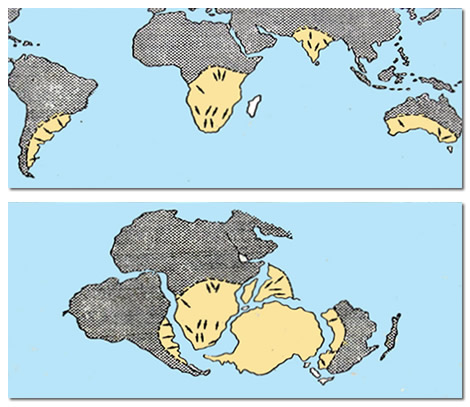To be sure, Wegener made mistakes. He asserted that Greenland is drifting west by about a mile a year, which is clearly nonsense. (It's more like half an inch.) Above all, he could offer no convincing explanation for how the landmasses moved about. To believe in his theory you had to accept that massive continents somehow pushed through solid crust, like a plow through soil, without leaving any furrow in their wake. Nothing then known could plausibly explain what motored these massive movements.

It was Arthur Holmes, the English geologist who did so much to determine the age of the Earth, who suggested a possible way. Holmes was the first scientist to understand that radioactive warming could produce convection currents within the Earth. In theory these could be powerful enough to slide continents around on the surface. In his popular and influential textbook Principles of Physical Geology , first published in 1944, Holmes laid out a continental drift theory that was in its fundamentals the theory that prevails today. It was still a radical proposition for the time and widely criticized, particularly in the United States, where resistance to drift lasted longer than elsewhere. One reviewer there fretted, without any evident sense of irony, that Holmes presented his arguments so clearly and compellingly that students might actually come to believe them.












